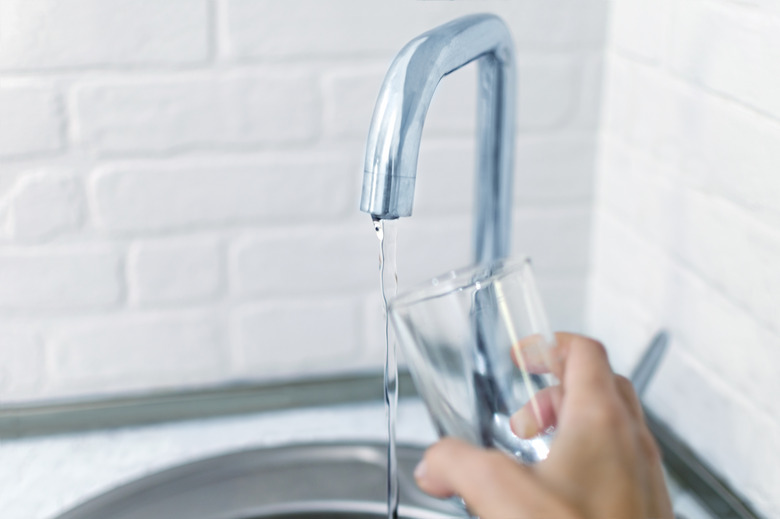How To Fix A Leaky RO Faucet
We may receive a commission on purchases made from links.
A reverse osmosis (RO) faucet contains an in-line filtration system that works to remove ions, salts and contaminants from standard water. These systems use a semiporous membrane that allows these impurities to pass through, eliminating them from the water line. Though they are typically well made, RO faucets may need repairs from time to time just like any other faucet. Fortunately, fixing a leaky RO faucet is fairly straightforward.
Understanding RO Faucets
Understanding RO Faucets
Reverse osmosis faucets come in two versions: air gap and non-air gap. The air gap acts as a safety feature, ensuring that water doesn't enter back through the osmosis membrane if, for example, the sink drain plugs. The air gap is formed inside the hardware via a hole that has been drilled through the metal, allowing air to form a pocket inside the fixture that keeps drain water from backfeeding.
Regular osmosis occurs when molecules flow from areas of high concentration into areas of low concentration until they reach equilibration. Reverse osmosis uses water pressure to pass water through a membrane that holds back larger particles, like many contaminants. Faucets using this type of filtration then wash the contaminants down a small drainage tube so that the water exiting the fixture is clean.
Leaks in RO Faucets
Leaks in RO Faucets
With these types of faucets, leakage usually comes from buildup of debris somewhere else in the system. Since the reverse osmosis faucet needs to get rid of water as part of the osmosis process, any blockage or buildup can interfere with the operation of the faucet.
If the faucet is leaking out of the tip or out of the base, you can look at tightening the connections at those points with a wrench or replacing the plumber's tape to get a better deal. If the RO faucet is leaking from the air gap hole or from another part of the reverse osmosis mechanism, you'll want to check out the lines and the drainage to see if you can find the problem.
Fixing a Leaky RO Faucet
Fixing a Leaky RO Faucet
If you're an inexperienced plumber, you may want to turn off the water supply to the sink just in case something gets bumped. Line the bottom of the sink cabinet with old towels to protect the wood from damage. Examine the RO system and locate the drain line from the reverse osmosis mechanism — this is probably a flexible tube, most likely black. Remove the drain tube from the setup. You may need to twist or turn the tubing to remove it from the fitting.
Once the tubing has been removed, check to see whether water will flow through. If not, you'll need to use something like a pipe brush to insert into the drain tube in an attempt to push the debris out of the tubing.
Be careful not to crack or damage the tubing itself, or you'll need to replace it. Clean out the drainage tube until water can freely pass through and then reconnect the tube (and turn the water back on if you've turned it off). Check to see whether this has resolved the leak.
Avoiding RO Faucet Leaks
Avoiding RO Faucet Leaks
You can avoid many of these problems by making sure your reverse osmosis faucet is lined up and connected properly. Make sure the garbage disposal connects to the drain separately and as far away as possible from the RO faucet connection. Be sure flexible tubing is the right length.
